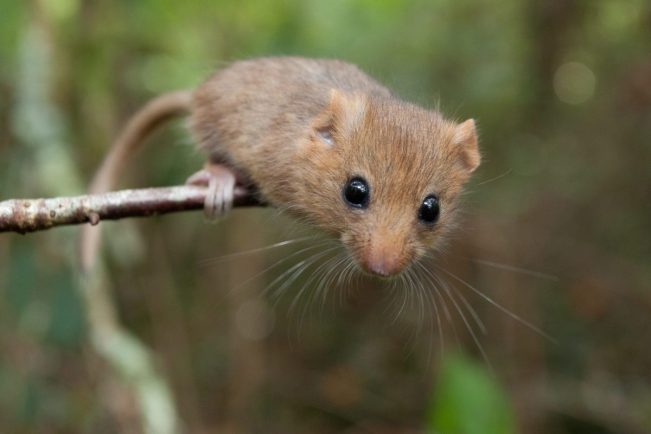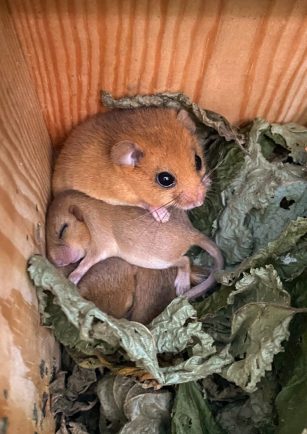SHOCKING statistics show the native hazel dormice population has declined in the UK by 70 per cent since 2000.
More worringly, there are concerns the species could be locally extinct from 20 English counties for the first time since Victorian times.
Habitat loss, degredation and climate change are cited as the main reasons for the decline in the new ‘State of Britain’s Dormice 2023’ report which has been published today (Friday, November 10) by wildlife charity ‘People’s Trust for Endangered Species’ (PTES).
The document also reiterates for dormice to be classified as ‘endangered’ on the IUCN Red List, rather than ‘vulnerable’.
Conservationists will now monitor a greater diversity of habitats where dormice might be present to gain a more complete picture.
PTES says, despite the alarming topline statistics, its annual reintroduction programme and other conservation projects are making a difference locally and ensure a future for dormice.
Hazel dormice have been a flagship and key indicator species for the management and conservation of woodlands and hedgerowss, meaning where there are dormice there is usually a wider animal and plant diversity. But, they have experienced a historic and catastrophic decline.
The research
Data collection for this report from PTES’ National Dormouse Monitoring Programme (NDMP) – the longest running small terrestrial mammal monitoring programme in the world – began in 1990. PTES and volunteers have been regularly checking hundreds of dormouse nest boxes located at NDMP woodland sites across the country to record numbers. This gives a valuable insight into how populations are changing in our woodlands, but the report highlights the need for increased surveying to take place in addition to NDMP checks, and in a greater diversity of habitats.
Since 1993 when the first reintroduction took place in Cambridgeshire, PTES and partners have released over 1,112 hazel dormice into 25 different woodlands in 13 counties, with supplementary releases taking place in some areas to improve genetic diversity.
This scheme has ensured dormice are now present in six English counties they had previously been lost from – most in the Midlands or northern England.
Large-scale landscape projects to restore and connect prime dormouse habitat have also been implemented in Warwickshire and north Wales, hedgerow planting – offering dormice safe passage and nesting sites between woodlands – has taken place in Yorkshire and Hampshire, and volunteer dormouse groups across the country continue to monitor and record local populations.
PTES also launched the Dormouse Footprint Tunnel Survey in 2022 to begin surveying non-woodland habitats, and offers training for woodland managers to encourage them to manage their land more sympathetically for dormice and other species. And the charity funds vital research to improve the understanding of dormouse ecology and continues to install innovative arboreal dormouse bridges crossing major roads or other infrastructure, which are growing in number.
The local picture
Two reintroductions of dormice in Warwickshire – Wappenbury Wood in 2017 and Ryton Woods in 2018 – have led to populations stabilising and doing well.
PTES also reintroduced dormice into Windmill Naps (a private woodland near Tanworth in Arden) in 2009 and 2010 where the charity believes the creatures are also doing well. These have dispersed from the original release site to the embankment of the M42 so pockets within the Midlands are doing well, despite the national decline.
PTES and organisations like the Warwickshire Wildlife Trust (who own Wappenbury Wood and Ryton Woods) will continue to monitor populations to understand how dormice are faring and appropriate woodland management at both sites will continue to be carried out.
Worcestershire is on the edge of the dormouse’s range, but there are 10 known sites where dormice are present. They appear to also be stable/doing well.
So what now?
Ian White, PTES’ dormouse and training officer, said the wealth of data from the monitoring programme gave a unique insight into how dormice were faring and contributed to major reports such as the recent ‘State of Nature’ which drives wider conservation efforts.
“If the decline continues at the same rate, in another 30 years dormouse populations will have fallen by 94 per cent since 2000, which we simply cannot let happen.”
Calling for increased funding to help protect dormice, he added their uncertain future could not be fixed overnight and seeing if the conservation work was effective would take time.
Visit ptes.org/dormice to read the full report.













